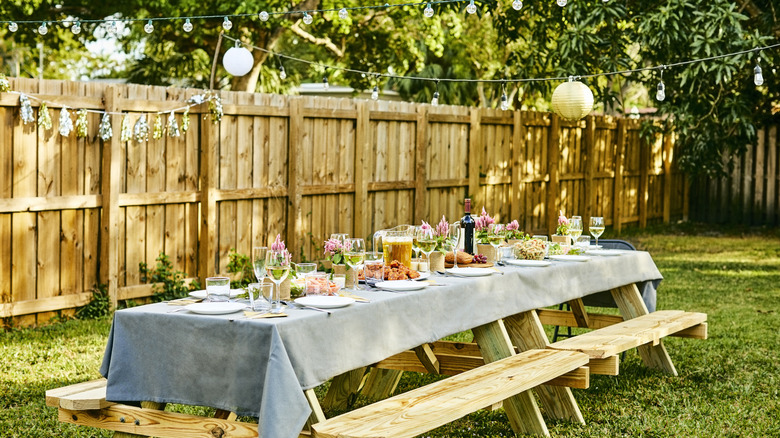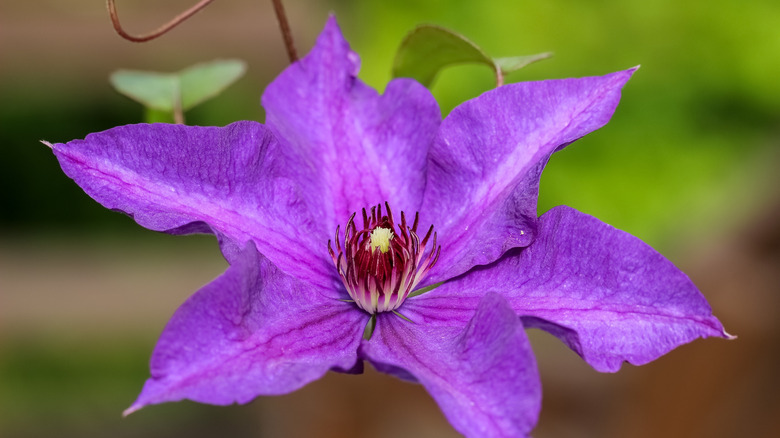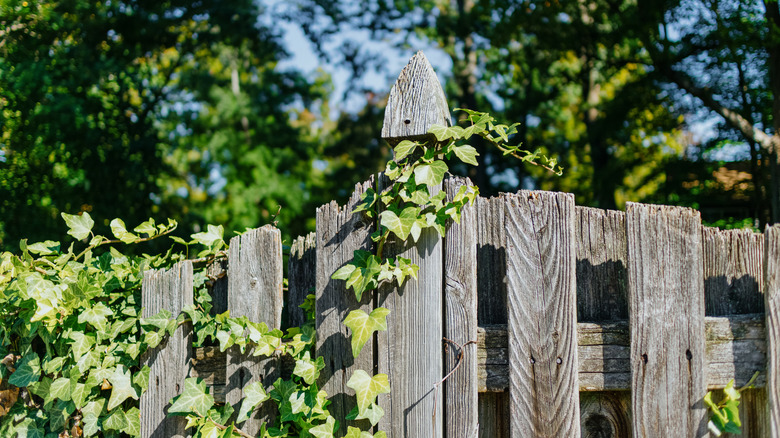The Fast-Climbing Plant That Adds Vibrant Color To Your Ugly Fence
Having a fence can provide a variety of benefits depending on the type. Decorative fences can add visual appeal while establishing boundaries in your yard, while other types of fences may come with enhanced security, additional privacy, and even noise reduction. However, even with the benefits your fence can offer, you may find yourself wishing for a different, more natural aesthetic without the work that comes with creating a living fence. Fortunately, with this fast-climbing vine, you can elevate your existing fence and give it a pop of color.
Clematis hybrids (Clematis x hybrida) are eye-catching perennial vines that are in the same family as buttercups. They bloom in the late spring, and often again in summer as well, with large, show-stopping blooms in a range of colors, such as blues and purples, red, and more. As a result, if you're looking for a budget-friendly way to elevate your fence, adding these flowers can be a clever route to take.
Grow clematis hybrids to elevate your fence's appearance
If you've decided that clematis hybrids are the right choice for your yard and fence, the next step is learning how to grow these vibrant, vining flowers. To start off, these flowers are hardy to USDA Hardiness zones 4 through 9, and they do best in moist soil that offers good drainage and ample nutrients. You may want to consider mulching the roots to give clematis hybrids the best chance at thriving in your yard. Clematis hybrids can grow in partial shade, but they do best when offered full sun, and you'll also want to take the steps to ensure that their soil is cool and damp without becoming waterlogged.
Aside from these steps, clematis hybrids are generally low-maintenance, flowering plants. They do require some pruning during the winter for the best results, but you can also propagate the stem cuttings, combining two tasks into one annual chore. Because they can be weak climbers, you may also need to give them a hand while first establishing this flower on your fence.
What to know before planting clematis hybrids
Before adding clematis hybrids to your yard as a way to elevate your fence's appearance, there are two things to keep in mind. First, because clematis hybrids are woody vines, they can be harmful for fences, especially wooden fences. With vinyl fences, there's not as much threat of woody vines impacting the structure of your fence, but there is still a concern about trapped moisture. Overall, for vining plants, aluminum is often the most durable material, even against moisture.
Regardless of fence type, it's important to familiarize yourself with the warning signs that vines are causing fence damage. This way, you can promptly remove your vines if needed. If you've had your fence professionally installed, you may want to check first to ensure that adding this eye-catching flower doesn't invalidate any existing warranties for seamless repairs in the future.
Clematis hybrids are also toxic for both humans and pets if ingested, with minor irritation if touched. As a result, this flower might not be the best choice if you have curious pets or children exploring your yard. You may also want to consider a different plant if you're looking to add greenery and a splash of color to your fence in areas that you often use, such as gates, to avoid contact with clematis hybrids.


